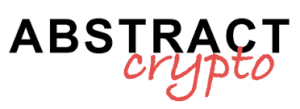There seems to be no end to the soap opera of Bitcoin refunds to former customers of the Japanese crypto exchange Mt. Gox that went bankrupt in 2014.
In recent years, the bankruptcy trustee had managed to get on the verge of initiating the restitution, which was scheduled for October, but today he let it be known that it is all postponed until next year.
Bitcoin: postponement by bankrupt Mt. Gox exchange
The official statement says that the deadline for repayment has been postponed to 31 October 2024.
Although it also states that the bankruptcy trustee is already preparing to make the refunds, there are still ongoing issues that prevent the process anytime soon.
Specifically, there would still be ongoing discussions regarding information regarding creditors and their credit, with banks and providers of funds transfer and cryptocurrency services.
It is worth mentioning that refunds will be made through trusted third parties, i.e., crypto platforms to which customers will have to register to receive refunds.
However, for all creditors who have already provided the necessary information, the deadline is postponed only to the end of 2023.
The bankruptcy trustee in the official statement urges creditors who have not yet provided the necessary information to send it in, obviously before the refunds are made, otherwise it will not be able to proceed.
In light of this, it is possible to imagine that there are still many creditors who have not provided all the necessary information to be able to proceed.
After all, the bankruptcy occurred almost ten years ago, and Japanese bankruptcy procedures do not turn out to be particularly easy, especially for the many foreign customers. It is possible that many creditors are having objective problems completing the procedure by which the exchange requests the necessary information to be able to proceed, due in part to the fact that many probably have very small claims for which it is not worth going to too much trouble.
The refund of lost BTC
Indeed, it should be remembered that the exchange has experienced theft, so it is unable to return all funds.
However, over the years the market value of the remaining BTC has increased greatly, so although it may not be able to return all the funds, it may be able to return fewer funds, but with a market value equal to or greater than what all customer funds had in total at the time of the failure.
The exchange was closed in February 2014, when the price of Bitcoin was about $500. Since then, the market value of a BTC has increased by 5,000 percent, so it is possible that the current market value of Mt. Gox’s remaining Bitcoins exceeds the market value of all customer BTC it had on deposit at the time of the closure.
Despite this, some customers have opted to be returned in fiat currency, that is, to receive back not Bitcoin but fiat currency in an amount equal to the fiat value of the BTC they had on deposit at the time of the bankruptcy.
On the other hand, however, it is possible that those who opted for repayment in Bitcoin, while receiving back far fewer BTC than they had on deposit at Mt.Gox in February 2014, will still receive an amount of market value greater than the value their funds had on deposit on that date.
The soap opera
This soap opera has been dragging on for almost a decade now, and by the time repayments begin in October 2024, more than a decade will have passed since the closing.
To be fair, in the years immediately following (2015 and 2016) the price of Bitcoin fell again, making full redemption of funds virtually impossible.
But starting with the great bull run of 2017 the residual BTC that Mt.Gox still held, after the thefts, began to have a value in fiat currency greater than the total amount of debts, again calculated in fiat currency at the time of the shutdown.
However, in 2018 there was a new bear-market, and until December 2020 Mt.Gox went back to not having enough funds to repay all the debts.
The final turning point was in 2021, partly because last year’s bear-market did not bring Bitcoin’s market value back to levels comparable to those of 2014.
Suffice it to say that the record high of that cycle, touched in November 2013, was about $1,100, while the 2015 bottom was $150. Later in 2017 the price sprang to nearly $20,000, but by the end of 2018 it was back just above $3,000.
In contrast, during the last bear-market, after spiking to $70,000 at the end of 2021, Bitcoin’s price never fell below $15,000, making it possible for Mt.Gox to pay off all its debts even without returning all their funds to customers.


